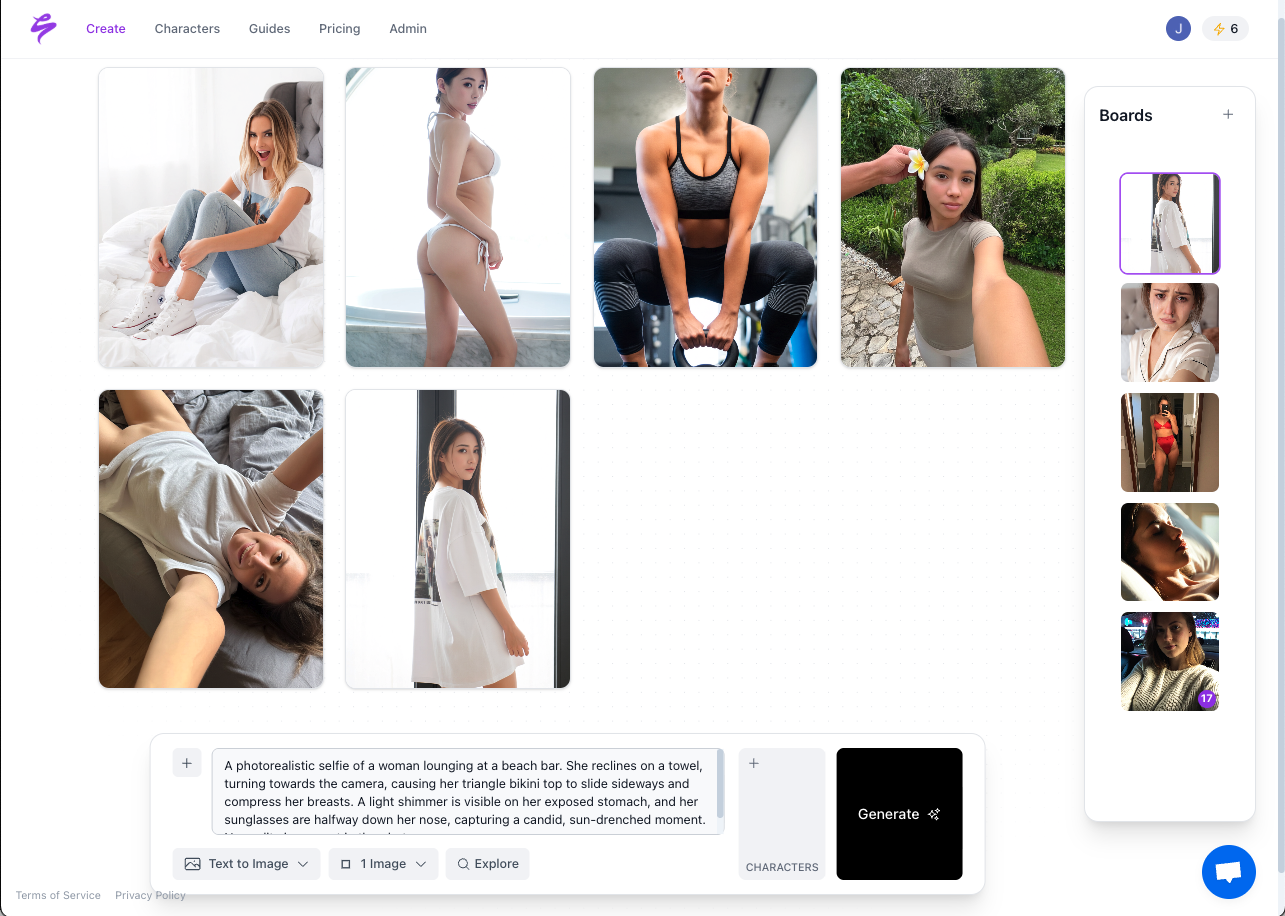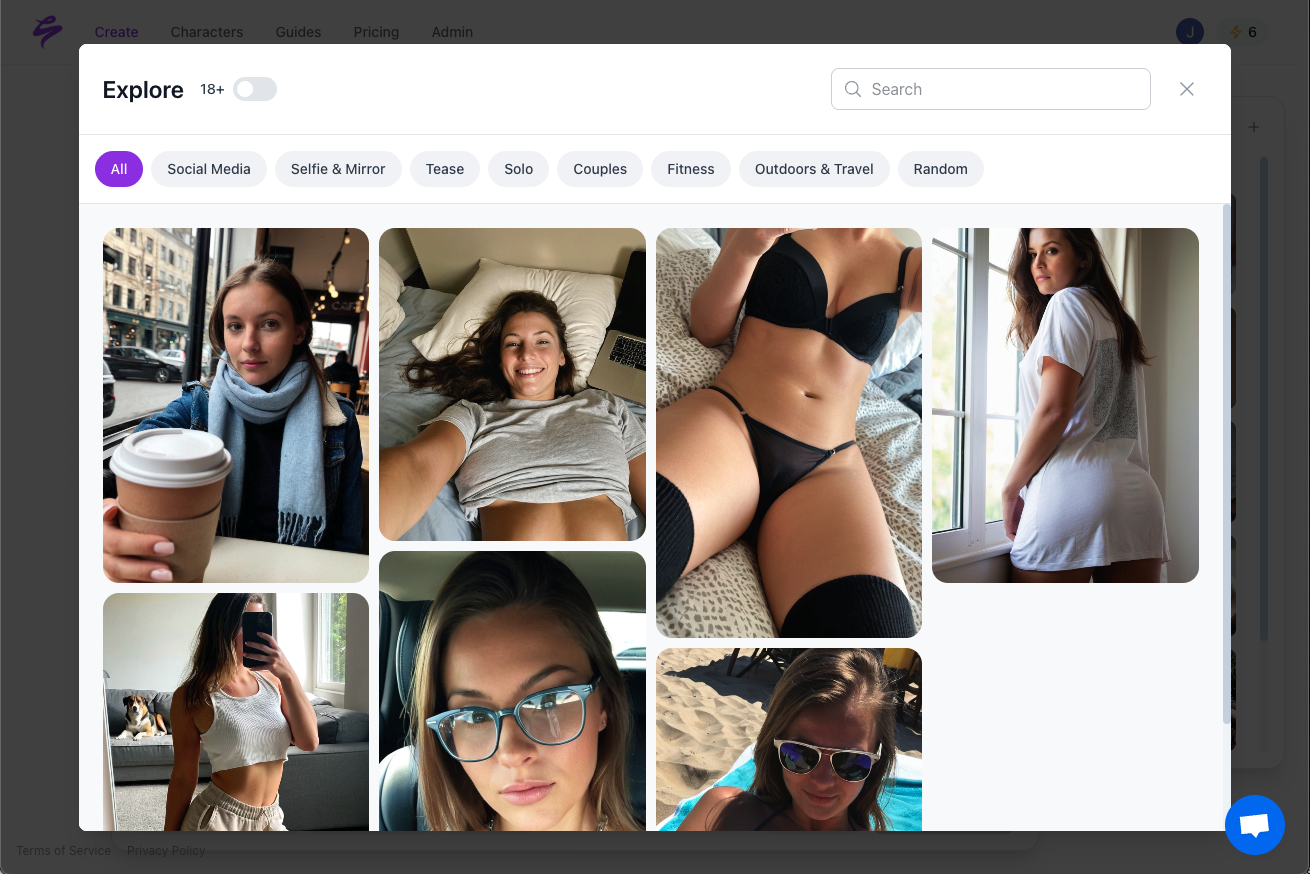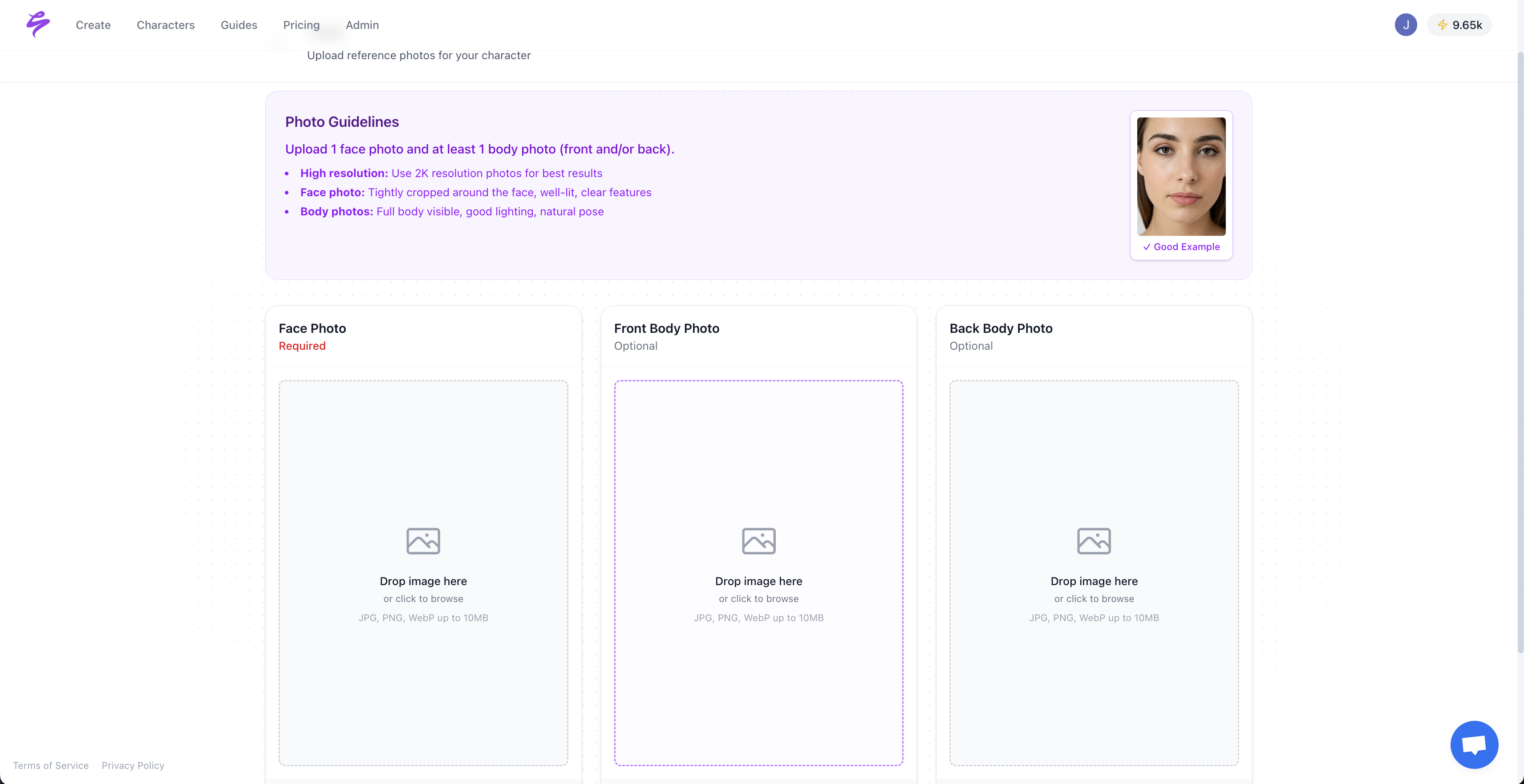Key Takeaways
- The creator economy faces a Content Crisis, where content demand exceeds what most individuals or teams can produce sustainably.
- Image to Video AI shifts creators from hands-on production to a creative director role, so they can focus on concepts, narrative, and strategy.
- A small set of photos can now generate large volumes of video content, cutting production time and costs while supporting consistent posting schedules.
- AI-driven video tools help maintain brand and likeness consistency across platforms, which supports recognition, trust, and monetization.
- Automating repetitive production work reduces burnout and frees time for audience engagement, partnerships, and creative experimentation.
- Sozee provides creator-focused Image to Video AI with hyper-realistic likeness recreation, monetization-friendly workflows, and strong privacy controls.
The Creator Content Crisis And How Image to Video AI Helps
The creator economy runs on an uneven equation: audiences expect constant content, but creators have limited time and energy. This structural imbalance, often called the Content Crisis, burns out creators, slows agencies, and puts a ceiling on revenue across digital platforms.
Today’s creators face a workload that would require constant availability. Fans look for frequent posts, personal responses, and fresh formats across multiple platforms. Many creators try to meet this demand with long hours and constant production, which leads to fatigue and inconsistent output.
Image to Video AI changes how creators work. These tools transform the creator role from technical execution to that of a creative director—creators prompt, guide, and shape narratives without deep editing or production skills. Instead of staying limited by physical constraints, creators can design concepts and storylines, then let AI handle a large share of production.
1. Instant Content Scalability: Turn Photos Into Ongoing Video Streams
Image to Video AI removes one of the biggest bottlenecks in content creation: the time, coordination, and cost tied to traditional video shoots. With advanced platforms like Sozee, creators can transform as few as three photos into large volumes of video content while keeping a hyper-realistic look and consistent style. This approach does not replace authentic content. It multiplies what a creator can do with the assets they already have.
The scalability benefits appear quickly. AI-driven workflows cut manual editing, reduce outsourcing needs, and allow rapid iteration, crucial for competitive digital brands. Instead of spending days on one video shoot, creators can generate weeks of variations from a single image set. These variations can cover social clips, behind-the-scenes angles, personalized messages for fans, and promotion-ready assets.
Modern AI video creation tools now offer batch generation from image sets, smart upscaling, and native format adaptation for different platforms, so creators can output the same concept in formats tuned for TikTok, Instagram, OnlyFans, and other platforms without re-editing each version.

Start scaling your video content with Image to Video AI and sign up for Sozee.
2. Reliable Brand And Likeness Consistency Across All Formats
Brand consistency is difficult to maintain when creators juggle many platforms and content types. Image to Video AI reduces this friction by keeping a stable likeness and visual style across outputs. Advanced AI achieves notable progress in ‘multi-entity consistency,’ allowing for improved character and style continuity, which is critical for brand consistency and narrative filmmaking.
This consistency extends beyond how a creator looks. Multi-modal AI tools are increasingly able to maintain brand voice across text, image, and video, letting agencies and solo creators deliver consistent aesthetics and messaging across platforms. For personal brands, agencies, and virtual influencers, this supports audience recognition and long-term trust.
Sozee’s hyper-realistic likeness recreation focuses on keeping each generated video aligned with the creator’s established appearance. This reduces the impact of common production variables, including lighting changes, makeup differences, wardrobe shifts, and natural aging. The result is a steady, recognizable brand presence that still reflects the creator’s authentic image.
3. Creative Exploration And Rapid Prototyping Without Heavy Production Costs
Traditional content production often requires large upfront investments in locations, props, lighting, and crew before a creator knows whether a concept will work. Image to Video AI reduces this risk by making creative prototyping fast and inexpensive. Innovative monetization strategies include using swift prototyping to test creative directions, rapidly launching new content series, and building personalized advertising or UGC at scale.
Production costs drop sharply when creators can test ideas with a few prompts instead of a full shoot. Leading tools in 2025 introduce pro-level video controls typically unavailable outside major studios, such as smart scene transitions and automated video extension. Creators can try fantasy environments, historical backdrops, or futuristic settings that would be expensive or impractical to stage in real life.

This flexibility turns content planning into a space for structured experimentation. Creators can run small tests on new styles, explore niche segments, or trial new persona directions before committing larger budgets. The outcome is more relevant, engaging content that better matches audience interests and creates more options for monetization.

Explore new creative directions by turning your static images into dynamic video content with Sozee.
4. Freedom From Burnout: Reclaim Your Time And Energy
Creator burnout grows as content expectations rise. Many creators feel pressure to publish constantly while staying authentic and high quality. This pattern often leads to long workdays, fragmented focus, and reduced creative enjoyment.
Automated content generation substantially reduces creation time—real examples show up to 70% time savings with improved brand satisfaction for agency workflows. These efficiency gains free time for activities that matter most to long-term success, including audience interaction, partnership building, and concept development.
AI video tools empower creators to automate repetitive or time-consuming tasks, accelerating the production pipeline for both solo operators and content studios. With Sozee, many creators can prepare a month of content in a single afternoon. That shift opens time for personal life, planning, and consistent rest, which supports sustainable creativity.
Comparison: Traditional Video Creation vs. Image to Video AI
|
Feature |
Traditional Video Creation |
Image to Video AI (Sozee) |
Impact |
|
Content Volume |
Limited by physical constraints |
On-demand generation from existing images |
Up to 10x content output |
|
Production Time |
Days to weeks per video |
Minutes to hours |
Around 70% time reduction |
|
Cost Structure |
High (equipment, crew, location) |
Subscription-based, predictable |
Significant production cost savings |
|
Consistency |
Variable, requires constant effort |
Hyper-realistic, automated |
High brand coherence across formats |
5. Expanded Monetization Paths And Deeper Fan Engagement
Content exists to serve audiences and, for many professionals, to support income. Image to Video AI opens new ways to package and deliver content that aligns with how fans want to engage and pay.
Creators can generate personalized clips on demand, offer tiered content series, and maintain several revenue streams at once. Sozee centers its features on monetizable creator workflows, supporting everything from SFW social teasers to NSFW premium material. Outputs can be tailored for OnlyFans, Fansly, FanVue, TikTok, Instagram, and other platforms so each video has a clear place in the monetization funnel.
The engagement impact is significant. Implementing AI leads to increased content consistency and enables efficient A/B testing of different video concepts or story directions. Creators can compare how audiences respond to different versions of a scene, storyline, or offering, then double down on what performs best.
Fan interaction becomes more direct when creators can respond to requests with custom video content in near real time. This higher level of responsiveness supports stronger fan relationships, longer retention, and higher average revenue per fan.
How Sozee Strengthens Your Image to Video AI Strategy
Many Image to Video AI tools target general use cases. Sozee focuses on the specific needs of the creator economy. The platform prioritizes hyper-realistic likeness recreation and workflows that map directly to how creators plan, publish, and monetize content. With three high-quality photos, creators can unlock a library of videos that align with their existing brand.

Sozee’s setup process removes several common friction points, such as complex training steps or technical configuration. Creators can upload source images, review likeness results, and begin generating content in a short session. The same environment supports top-of-funnel teasers, mid-funnel engagement clips, and premium content.

Privacy and control sit at the core of Sozee’s design. Likeness models stay isolated from other accounts and do not feed into shared training pools. This structure supports creators who want to scale output while keeping tight control over where and how their image appears.
Sign up for Sozee to build a creator-focused Image to Video AI workflow from your existing photos.
Frequently Asked Questions about Image to Video AI for Creators
What are the main limitations of current Image to Video AI tools?
Current Image to Video AI tools often limit output length to short clips, usually around 10 to 20 seconds. Some tools still struggle with full narrative continuity, and many require practice with prompt design to reach consistent results. Audio generation quality also tends to lag behind video, so creators often combine multiple tools for best outcomes. Platforms like Sozee respond to these gaps by narrowing in on creator-specific workflows and high-quality, realistic visuals.
How can creators ensure brand consistency when using Image to Video AI?
Brand consistency depends on strong source images, clear prompts, and the right platform capabilities. Sozee focuses on multi-entity consistency and hyper-realistic likeness recreation, which helps generated content stay visually aligned with the creator. Features that support consistent framing, style, and output formats are built into the workflow, from initial upload through exports for different platforms.
Is Image to Video AI ethical for content creation?
Ethical Image to Video AI use starts with consent, transparency, and clear boundaries. When creators use AI to generate content of themselves and control how it is sold or shared, the use case stays grounded in their rights to their own likeness. Sozee emphasizes privacy and control by keeping each likeness model private and separate. Creators decide how and where their digital likeness appears.
What specific benefits do content agencies see from Image to Video AI?
Content agencies gain predictable pipelines, reduced burnout among creators, and the ability to scale work across multiple talent profiles at once. Agencies can keep client calendars full, answer content requests faster, and run A/B tests on creative concepts without booking new shoots every time. This leads to steadier delivery quality with lower operational overhead.
How does Image to Video AI impact traditional video production roles?
Image to Video AI shifts the balance of work rather than removing the need for traditional skills. Creators and teams spend more time on concept development, audience strategy, and brand planning, and less time on repetitive editing or reshoots. Technical production skills remain useful, but strategic thinking and creative direction become central to how value is created.
The Future of Content Is On-Demand And Creator-Led
Image to Video AI marks a significant change in how content gets produced and how creators protect their time and energy. The approaches covered here show how this technology can ease current production pressures while opening new options for storytelling and monetization.
The Content Crisis that affects much of the creator economy remains a real risk, but tools built for creator workflows can reduce that pressure. General-purpose AI generators often miss the mark on likeness realism, consistency, and monetization needs. Sozee addresses these gaps with a platform aligned to how creators actually plan, produce, and sell content.
Creators, agencies, and virtual influencer builders who adopt Image to Video AI early can build more stable, scalable content systems and reduce reliance on constant manual production. This shift allows digital brands to grow in a more sustainable way, with content that stays consistent, audience-focused, and aligned with each creator’s goals.
